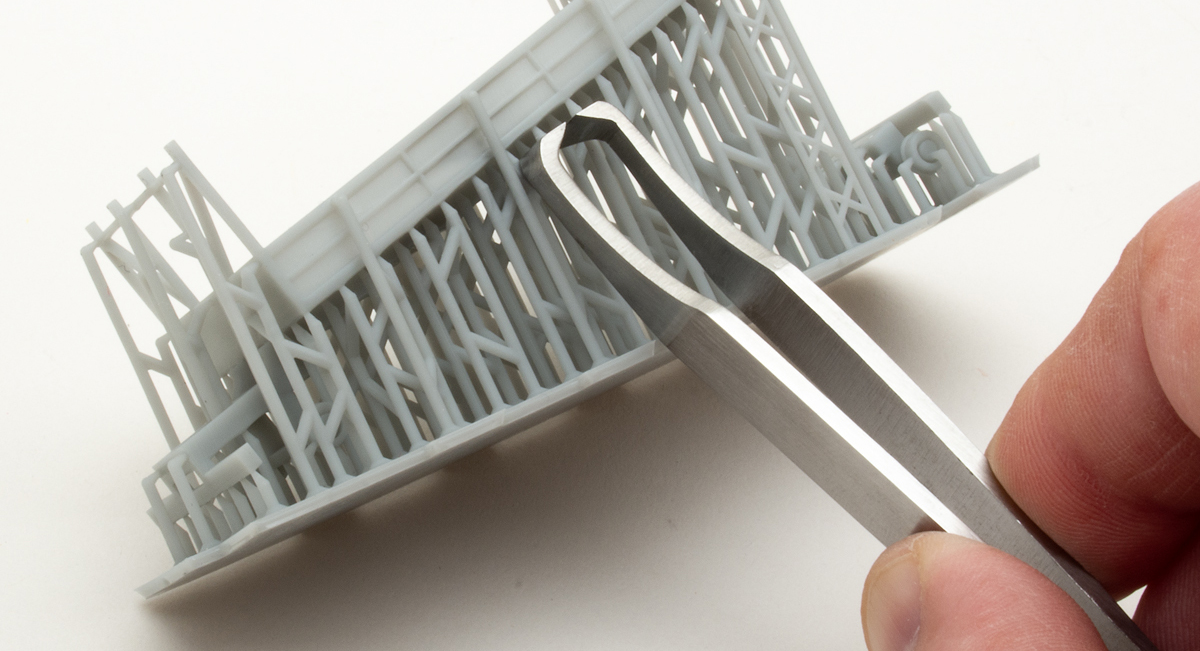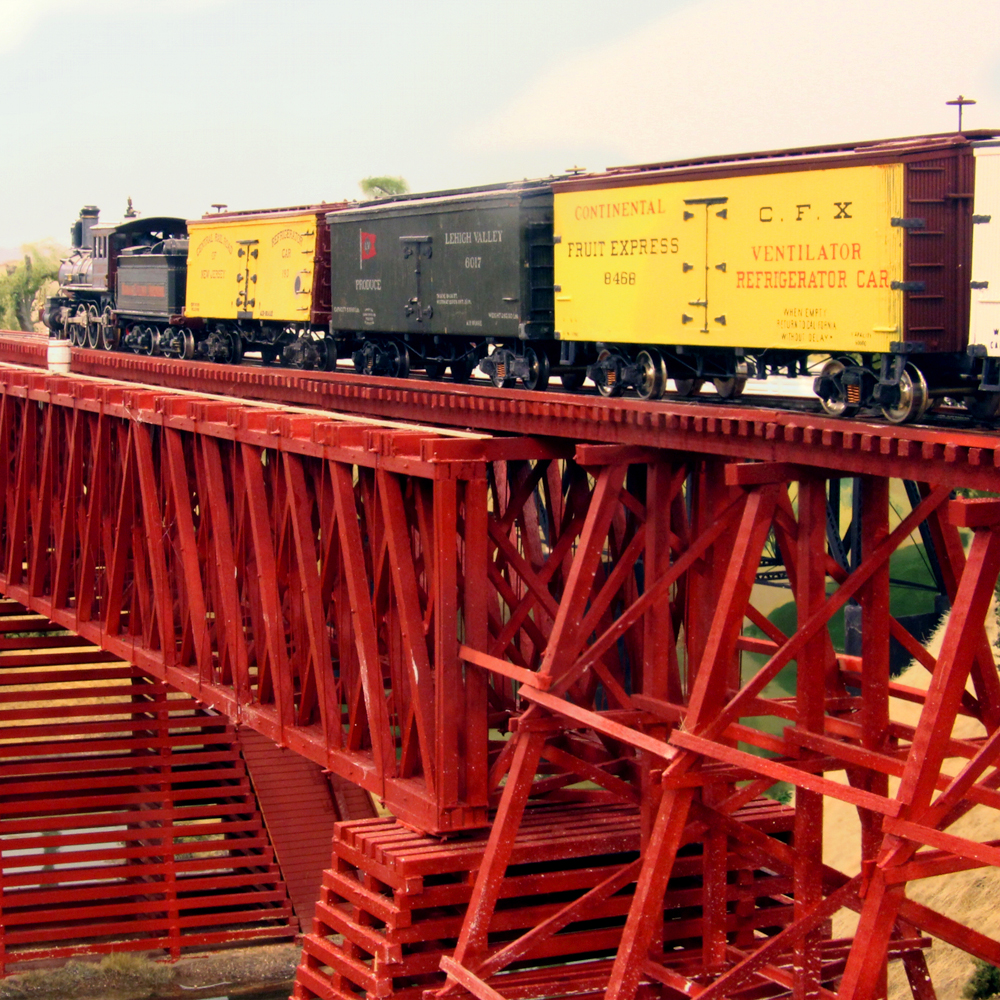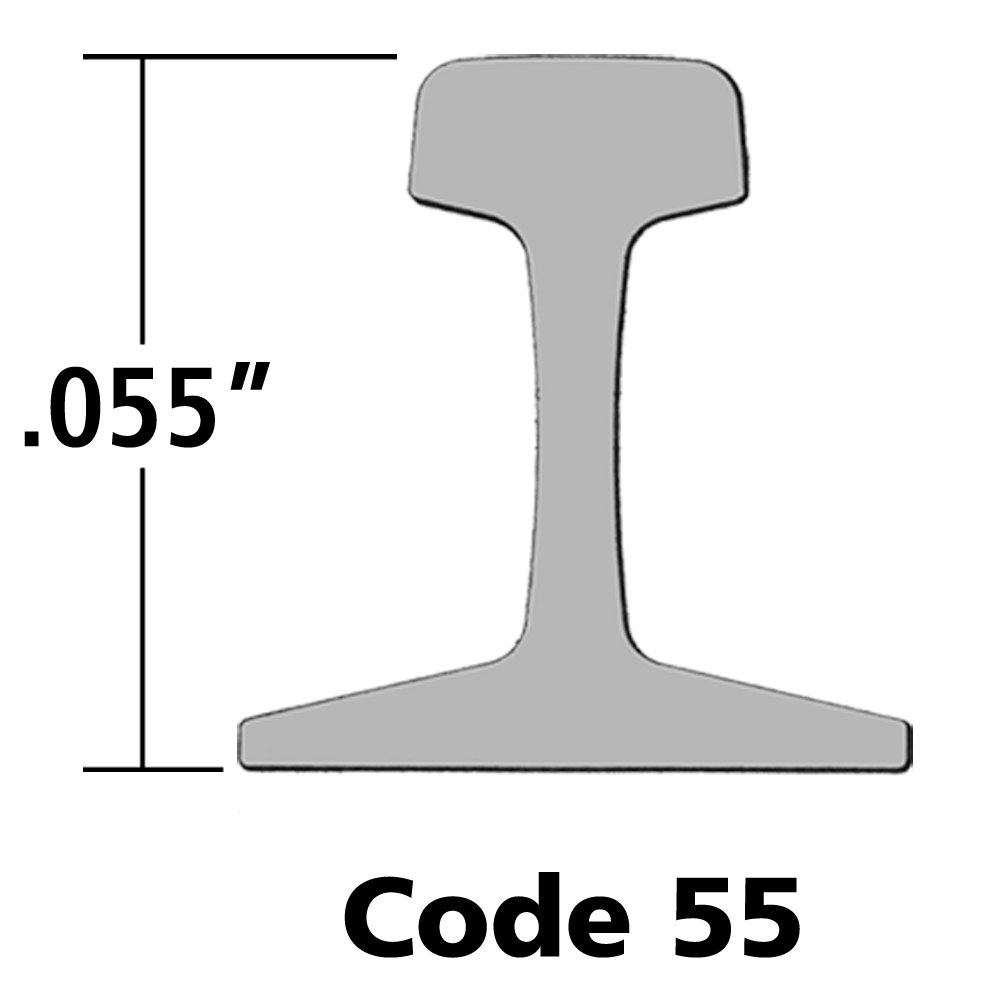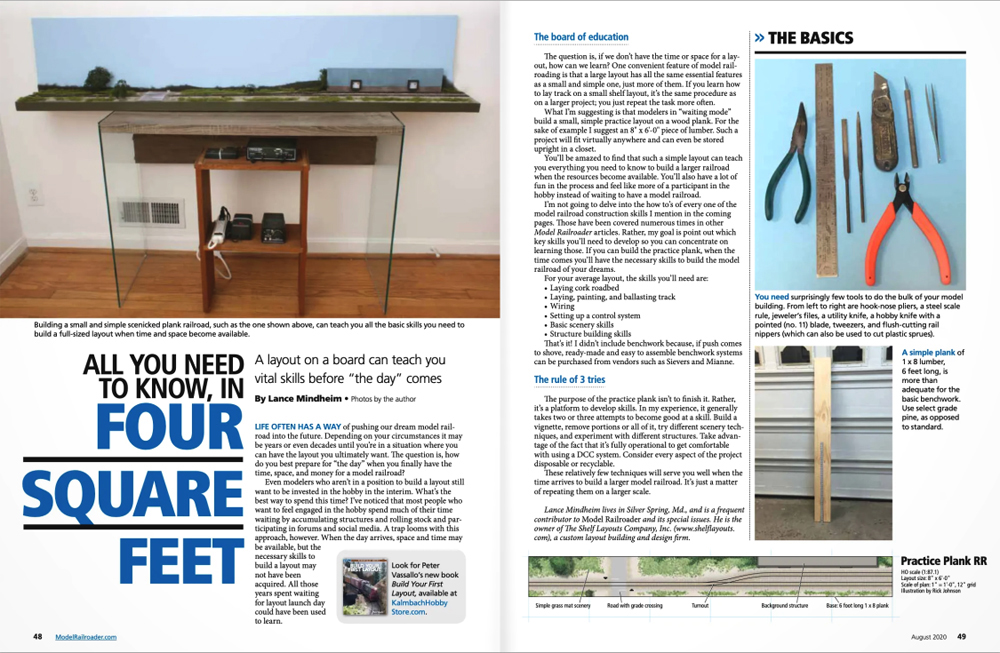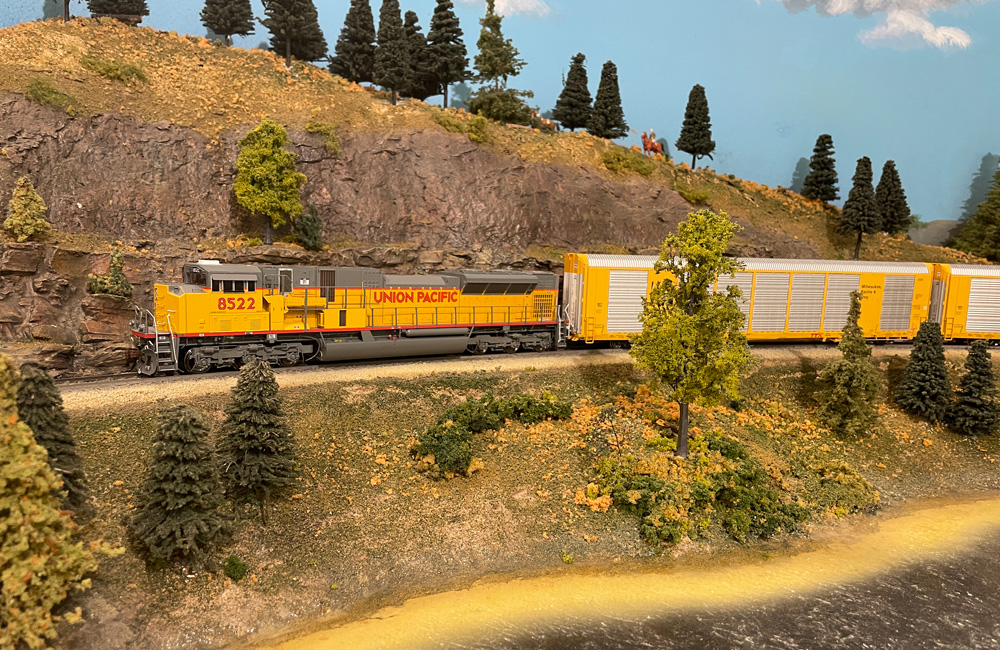
Q: I want to run six-axle power and trains of 15 cars or so around a return loop without any tight curves to it. What would be the recommended curve radius I should use, and how much space for a loop of track do I need? – Mike Bailey
A: The flippant answer is, how much space have you got? Modern diesel locomotives and the super-long freight cars they pull today will look more realistic the broader curves you can give it to operate on. Even if your HO scale DDA40X will handle a 21-inch radius, it will look unrealistic with the fuel tank overhanging the inside of the curve.
But seriously, the answer depends on what scale you’re modeling in. You’ll need a lot more space for a loop of track in O scale than you would in N. Since you didn’t specify your preferred scale, I’ll give you some guidelines for the most popular ones.
In his book Track Planning for Realistic Operation, John Armstrong recommends minimum curvatures of 11” for N scale, 18” for HO, 24” for S, and 35” for O scale. Since you want to run modern six-axle power, though, your minimum should be what Armstrong refers to as conventional curves, with broad curves (or even larger) being your goal.
| N scale | HO scale | S scale | O scale | |
| Broad curves | 17” | 30” | 41” | 58” |
| Conventional curves | 14” | 24” | 32” | 46” |
| Sharp curves | 11” | 18” | 24” | 35” |
(John Armstrong’s book is out of print, but you can find used copies out there for sale.)
So let’s get back to your question: How much space for a loop of track using conventional or even broad curves? Again, I have to ask: How much space do you have? Because the bigger your layout, the broader curves you can have, and the better your long rolling stock will look and run.
If we’re talking N scale (though I doubt we are), a turnback loop in conventional curves would be 28” across, which would fit comfortably on a 3-foot-wide table. An N scale broad curve would take up 34 inches, which would be fine in a skosh over 3 feet. An HO scale conventional curve would be 4 feet across, a bit too large for the traditional 4 x 8 starter layout. At 60” across, a broad HO scale curve would require too long of a reach-in distance for a solid table; at this size or bigger, you’d have to think about a space for access in the middle of the layout. In S or O scale, you’re definitely going to need to access your layout from the middle, rather than the edges.
And that brings me to the reason I keep asking about your space. Beginning modelers often conceive their first layouts as occupying the center of the room, with walking space all around it. But an “island” configuration like that is about the most inefficient use of space. A 4 x 8 layout with 3 feet of aisle space on all four sides puts 32 square feet of layout in a 140-square-foot room. Switch to an around-the-walls design with 2-foot-wide shelves around the perimeter, and the same 10 x 14-foot room yields 80 square feet of layout. Which means a longer main line, more space for towns and scenery, and a more prototypical run between stops. It gives you a better looking layout, too, with backdrops behind your trains instead of having to look over at Bob and Chuck running their trains from the other aisle. And while a 4 x 8 layout can handle at most 21” curves, you could easily put 30” or even broader ones into the corners of that around-the-walls layout.
So if it’s broad curves you want, start thinking outside the box.
Send us your questions
Have a question about modeling, operation, or prototype railroads? Send it to us at AskTrains@Trains.com. Be sure to put “Ask MR” in the subject.






